Who's That Mathematician? Paul R. Halmos Collection - Page 25
For more information about Paul R. Halmos (1916-2006) and about the Paul R. Halmos Photograph Collection, please see the introduction to this article on page 1. A new page featuring six photographs will be posted at the start of each week during 2012.
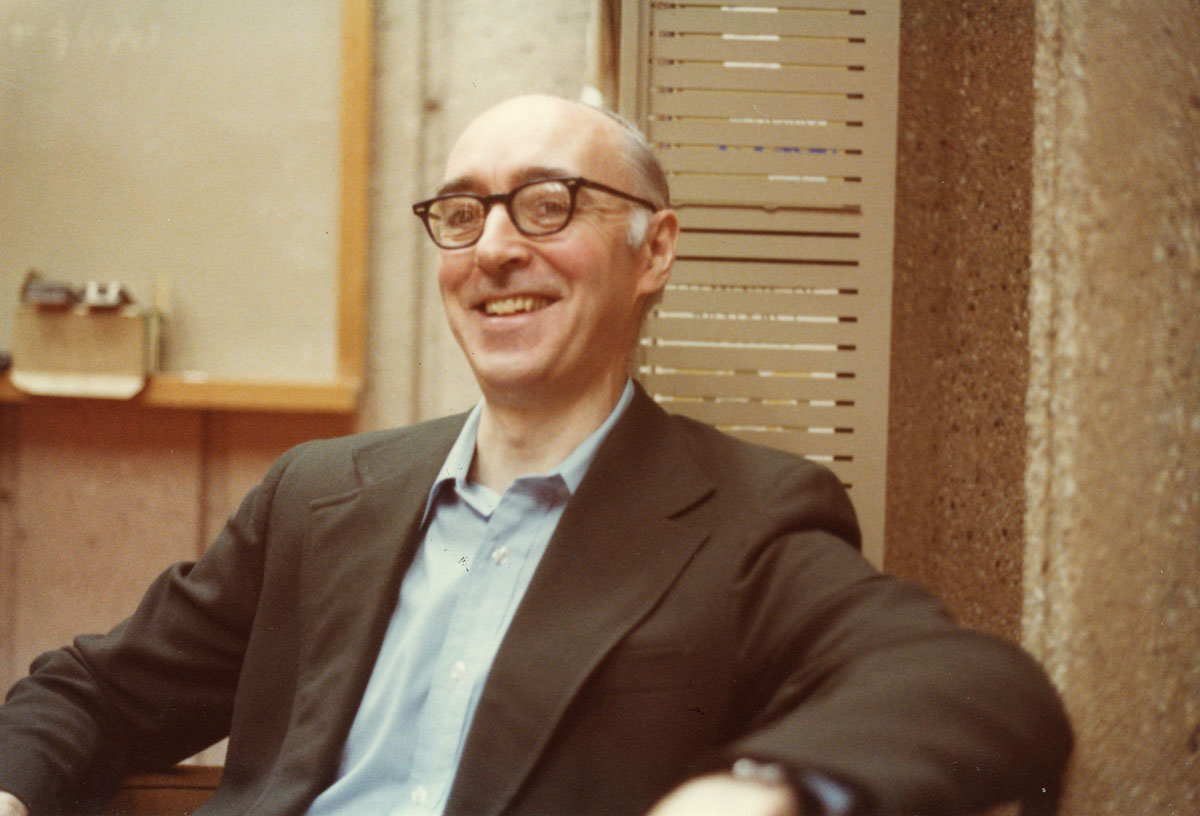
Halmos photographed logician William Howard in 1978 at a colloquium at the University of Illinois at Chicago Circle, where Howard was a professor. Howard earned his Ph.D. in 1956 from the University of Chicago with the dissertation “k-Fold Recursion and Well-Ordering,” written under Saunders Mac Lane. He recalls that he first met Halmos, who was a professor at Chicago at the time, in the spring of 1949 at a conference at the University of Illinois at Urbana-Champaign, where he was a graduate student. That summer, Halmos helped him transfer to the University of Chicago, but first he had to pass a test:
He asked me: "What kind of mathematics do you like? A page full of formulas, or one symbol sitting in the middle of the page?" My answer: "The latter." Of course, I knew that that was the answer he would like, but actually, that was my preference.
Howard was a researcher at Bell Labs from 1956 to 1959 and, from 1959 to 1965, was on the faculty at Pennsylvania State University, where he worked with the logician Haskell Curry, who retired from Penn State in 1966. In 1965 Howard joined the faculty of the University of Illinois at Chicago Circle (University of Illinois at Chicago as of 1982), where he is now Professor Emeritus and lists his interests as proof theory, foundations of mathematics, and history of mathematics. (Sources: Mathematics Genealogy Project, MacTutor Archive: Curry, UIC Mathematics)
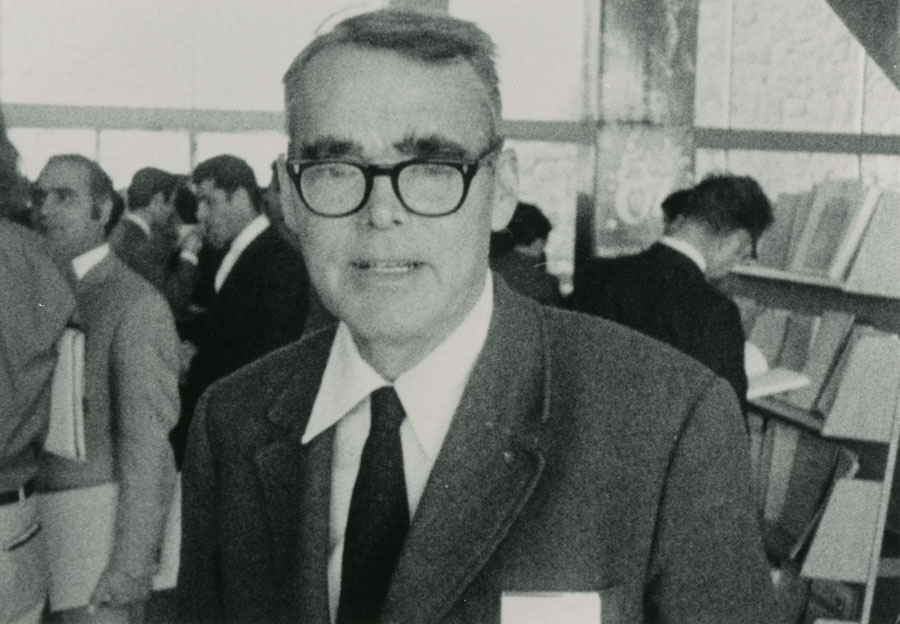
Probabilist Gilbert Hunt (1916-2008) was photographed by Halmos in 1972. After giving up a promising tennis career and performing wartime service as a weather forecaster (1941-46), Hunt earned his Ph.D. in 1948 from Princeton University with the dissertation “On Stationary Stochastic Processes,” written under Salomon Bochner. From 1946 to 1949, he also worked as an assistant to John von Neumann at the Institute for Advanced Study in Princeton. He was a faculty member at Cornell University from 1949 to 1959 and 1962 to 1965 and at Princeton from 1959 to 1962 and from 1965 onward. He is especially well known for his contributions to the theory of Markov processes. (Sources: MacTutor Archive, Mathematics Genealogy Project)
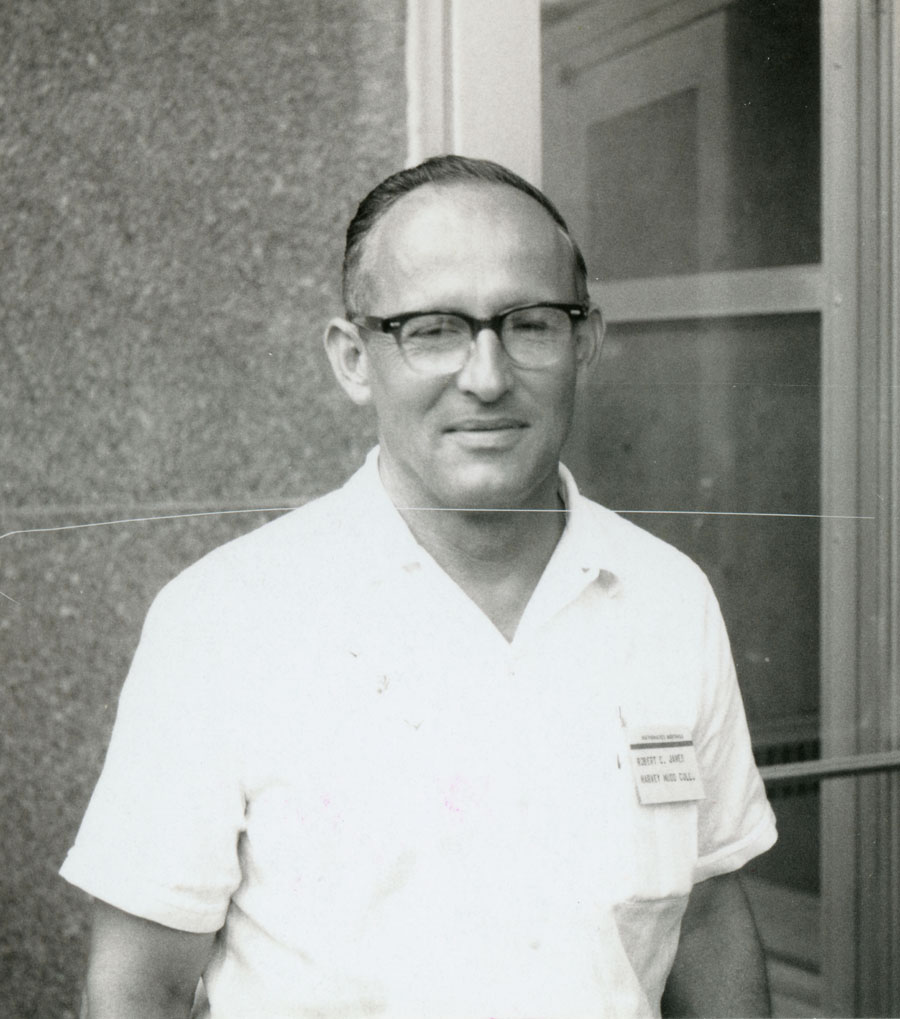
Halmos photographed functional analyst Robert C. James (d. 2004) at the AMS-MAA Joint Summer Mathematics Meetings in Amherst, Massachusetts, on August 26, 1964. James earned his Ph.D. in 1946 from the California Institute of Technology (Caltech) with the dissertation “Orthogonality in Normed Linear Spaces.” He was the only mathematics professor among the seven founding faculty members at Harvey Mudd College in Claremont, California, which opened its doors in 1957 to 48 mathematics, science, and engineering students, and he was a professor there at the time this photo was taken. Harvey Mudd College annually awards the Robert James Prize to two outstanding first year mathematics students. According to his Ph.D. student Steve Bellenot, who also was an undergraduate at Harvey Mudd College from 1966 to 1970, James left HMC in about 1968, spent a year at SUNY Albany, and then returned to Claremont to serve as a founding professor in the mathematics program at the Claremont Graduate School (now the Claremont Graduate University), where he spent the rest of his career and where Bellenot earned his Ph.D. in 1974.
In his primary research field, Banach spaces, James was especially well known for "James' Theorem" and for his counterexamples. Bellenot, who is now a mathematics professor at Florida State University, remembers that James named the solar-powered retirement retreat he built in the Sierra foothills of California "Trees and Bushes" after its surroundings and after a famous counterexample called the James tree space and a collection of essays on James trees spaces titled The James Forest (LMS, 1997). James may have been even better known for the Mathematics Dictionary he co-authored with his father, Glenn James. Founded by the elder James in about 1940, Bob James published its 5th and final edition in 1992. (Sources: Mathematics Genealogy Project, Harvey Mudd College History, Harvey Mudd College Math Awards, MathSciNet)
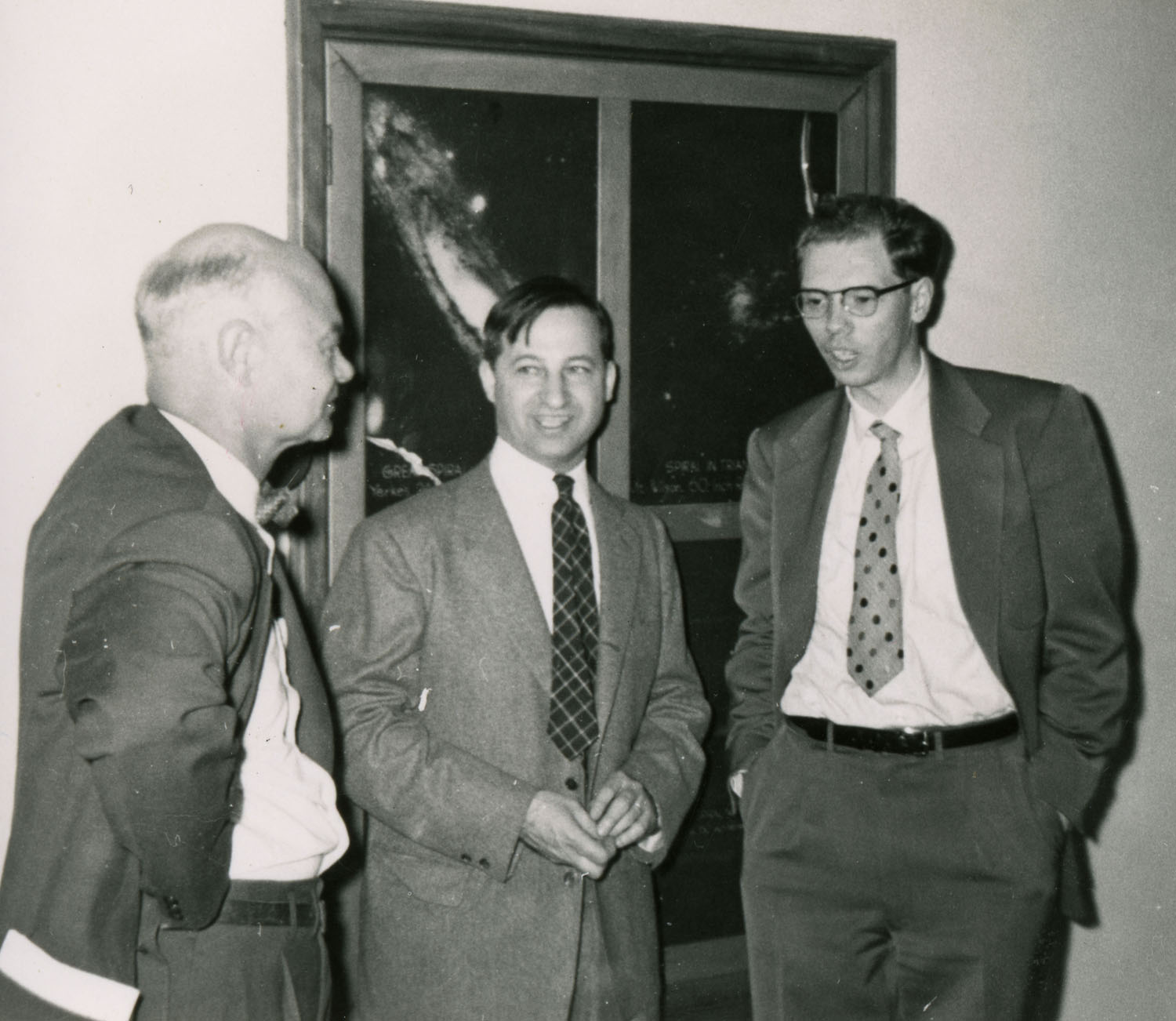
Number theorists Ralph D. James, Leonard Tornheim, and Donald J. Lewis (left to right) were photographed by Halmos in about 1955.
Born in England and educated in Vancouver, British Columbia, Canada, Ralph James (1909-1979) earned his Ph.D. in 1932 from the University of Chicago with the dissertation “Analytical Investigations in Waring’s Theorem,” written under Leonard Eugene Dickson. After studying with E. T. Bell for a year at Caltech and G. H. Hardy for a year at Cambridge, James was on the mathematics faculty at the University of California, Berkeley, for five years and the University of Saskatchewan for another five years before becoming professor of mathematics at the University of British Columbia in 1943. From 1961 to 1963, he served as president of the Canadian Mathematical Society. He retired from UBC in 1974 after coordinating the International Congress of Mathematicians held in Vancouver that year. (Sources: MacTutor Archive, CMS Presidents)
Leonard Tornheim earned his Ph.D. in 1938 from the University of Chicago with the dissertation “Integral Sets of Quaternion Algebras over a Function Field,” written under advisor A. Adrian Albert. He published in a wide variety of fields, including number theory, classical algebra, harmonic analysis, numerical analysis, and statistics, from 1941 to 1970. His publications include the book Vector Spaces and Matrices, co-authored with Robert Thrall and published in 1957. He was a faculty member at the University of Michigan from 1946 to 1955 (as was Robert Thrall from 1937 to 1969). (Sources: Mathematics Genealogy Project, MathSciNet, UM Faculty History Project: Tornheim, UM Faculty History Project: Thrall)
Donald J. (D.J.) Lewis (1926-2015) earned his Ph.D. in 1950 from the University of Michigan under advisor Richard Brauer. After holding positions at Ohio State University (1950-52), the Institute for Advanced Study (1952-53), and the University of Notre Dame (1953-61), Lewis returned to the University of Michigan, where he has spent the rest of his career and advised at least 25 Ph.D. students. He received the American Mathematical Society’s Award for Distinguished Public Service in 1995 and then continued to serve the mathematical community as director of the National Science Foundation’s Division of Mathematical Sciences from 1995 to 1999. (Sources: “1995 Award for Distinguished Public Service to Mathematics,” AMS Notices 42:4 (April 1995); Mathematics Genealogy Project; UM Faculty History Project)
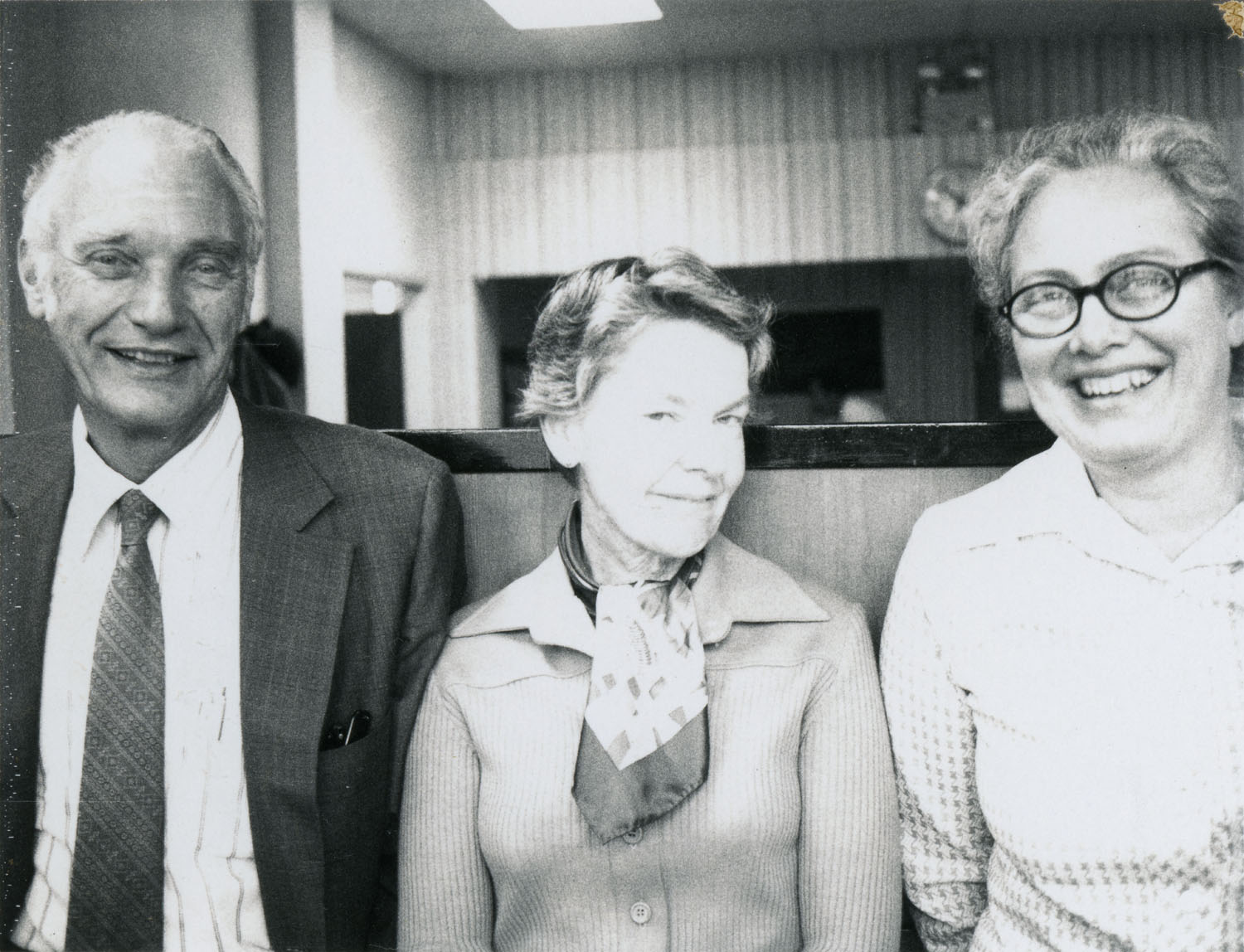
Halmos photographed F. Burton Jones, Madeleine Jones, and Mary Ellen Rudin at the International Congress of Mathematicians in Vancouver, British Columbia, Canada, on August 22, 1974. (See page 7 of this collection for a photograph of Enrico Bombieri and David Mumford, who were awarded Fields Medals at the 1974 ICM in Vancouver.)
F. Burton Jones (1910-1999) earned his Ph.D. in 1935 from the University of Texas at Austin with a dissertation in general topology written under advisor R. L. Moore. He was on the mathematics faculty at UT Austin from 1935 to 1950 (except for 1942-44, when he did war work), at the University of North Carolina at Chapel Hill from 1950 to 1962, and at the University of California, Riverside, from 1962 onward. Jones wrote important papers on point set topology and homogeneous continua, and was known as both an excellent researcher and an excellent teacher. (Source: MacTutor Archive; see also the biography of Jones available from the California Digital Library or from UC Riverside as a pdf file.)
Madeleine Maire Jones (1918-2006) married F. Burton Jones in 1936. A mathematics and education major at the University of Texas at Austin, she assisted with the publication, Creative Teaching: The Heritage of R. L. Moore (1972, 1993, 1999), now available online. In 1987-88, she and her husband endowed the F. Burton Jones Chair in Topology at the University of California, Riverside. (Sources: ancestry.com, Creative Teaching: The Heritage of R. L. Moore at Topology Atlas)
Mary Ellen Estill Rudin (1924-2013) earned her Ph.D. in 1949 from the University of Texas at Austin with a dissertation in general topology written under R. L. Moore. She also was influenced by F. Burton Jones. From 1949 to 1953, she was on the mathematics faculty at Duke University, and from 1953, when she married complex analyst Walter Rudin, to 1971, she held “temporary part time” positions at the University of Rochester and the University of Wisconsin at Madison while her husband held full-time positions at these institutions. In 1971, she became Professor of Mathematics at Wisconsin, in 1981 the first Grace Chisholm Young Professor there, and in 1991 Emeritus Professor. Throughout her career, Rudin published important papers in set-theoretic topology and was especially well known for her skill in constructing counterexamples. She was selected to give the Association for Women in Mathematics Noether Lecture at the Joint Mathematics Meetings in Louisville, Kentucky, in 1984, speaking on set-theoretic aspects of “Paracompactness.” (Sources: MacTutor Archive, Mathematics Genealogy Project, UW Mathematics, AWM Noether Lecturers)
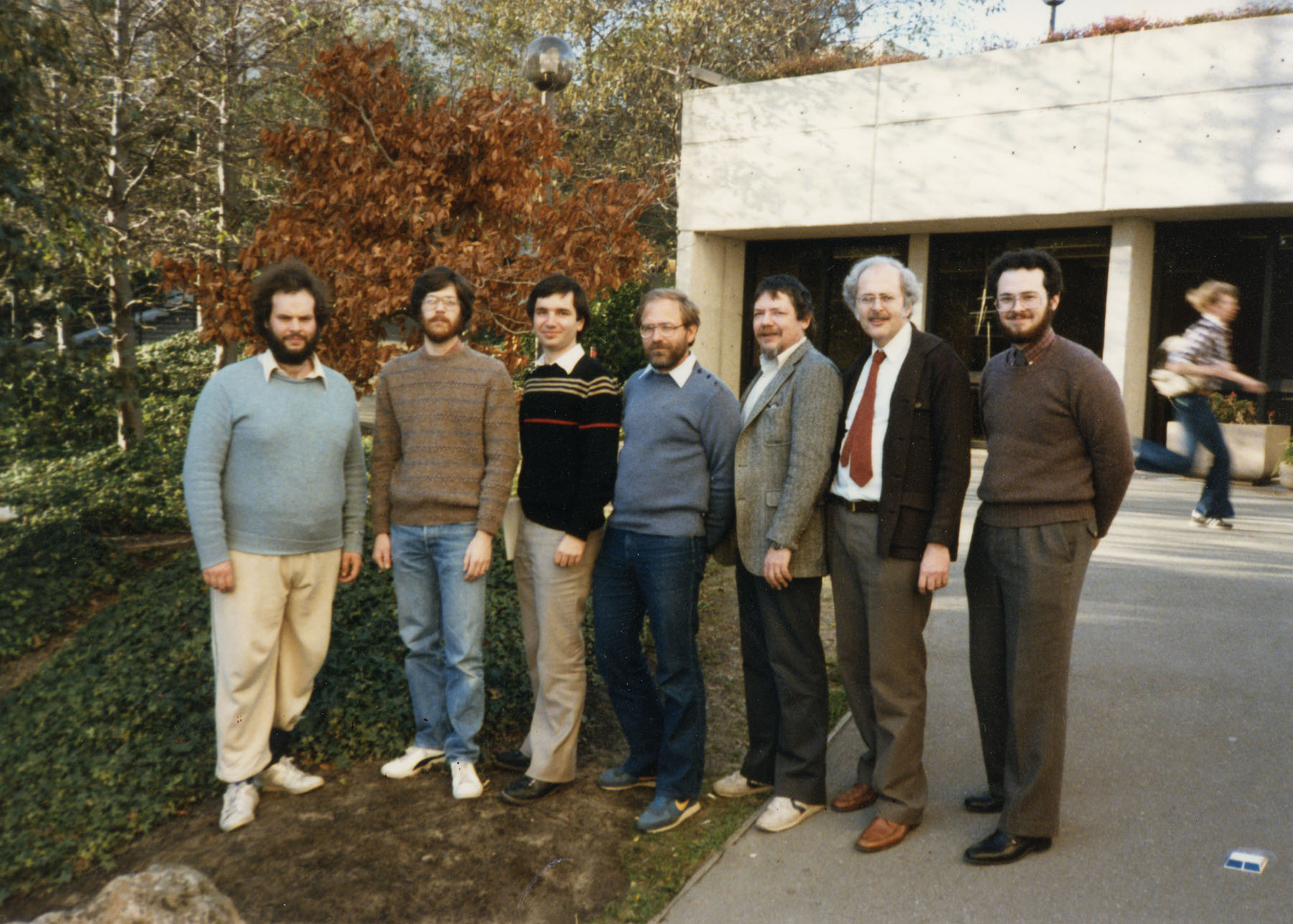
Vaughan Jones, left, discoverer of the Jones polynomial in knot theory, is pictured together with the discoverers of the HOMFLY polynomial, a generalization of the Jones polynomial, on February 10, 1985. The HOMFLY discoverers are, left to right, Jim Hoste, Adrian Ocneanu, Kenneth Millett, Peter Freyd, W. B. Raymond Lickorish, and David Yetter. According to Millett, the photo was taken on the University of California, Berkeley, campus during a pair of Mathematical Sciences Research Institute (MSRI) conferences / workshops on index theory and low-dimensional topology, and this was "the only time that all of us were together." (Source: Wolfram MathWorld)
Born and educated in New Zealand through the M.Sc. degree, Vaughan Jones earned his Ph.D. in 1979 from the University of Geneva, Switzerland. After one year at the University of California, Los Angeles, and four years at the University of Pennsylvania in Philadelphia, he moved to the University of California, Berkeley, in 1985. He received the Fields Medal in 1990 at the International Congress of Mathematicians in Kyoto, Japan, for finding a new polynomial invariant for knots and links, a discovery arising from his proof of the Index Theorem for von Neumann Algebras. In 2011, Jones became Distinguished Professor of Mathematics at Vanderbilt University in Nashville, Tennessee. (Sources: MacTutor Archive, Vanderbilt University Department of Mathematics)
Jim Hoste earned his Ph.D. in 1982 from the University of Utah in Salt Lake City with the dissertation "Sewn-up r-Link Exteriors." He is now professor of mathematics at Pitzer College in Claremont, California. (Sources: Mathematics Genealogy Project, Pitzer College Mathematics)
Adrian Ocneanu earned his Ph.D. in 1983 from the University of Warwick, England, with a dissertation on von Neumann algebras written under Ciprian Foias (pictured on page 14 of this collection). Ocneanu is now professor of mathematics at Pennsylvania State University in State College. (Sources: Mathematics Genealogy Project, Penn State Mathematics)
Ken Millett earned his Ph.D. in 1967 from the University of Wisconsin, Madison, with a dissertation on Euclidean bundle pairs. In 1998, he received the AMS Award for Distinguished Public Service. He is professor of mathematics at the University of California, Santa Barbara. (Sources: Mathematics Genealogy Project, UC Santa Barbara Mathematics)
Peter Freyd earned his Ph.D. in 1960 from Princeton University with a dissertation on functor theory. He is now professor emeritus of mathematics and director of the logic and computation group at the University of Pennsylvania in Philadelphia. (Sources: Mathematics Genealogy Project, University of Pennsylvania Mathematics)
W. B. Raymond Lickorish earned his Ph.D. in 1964 from the University of Cambridge, England, where he is now emeritus professor of geometric topology. He is the author of An Introduction to Knot Theory in the Springer Graduate Texts in Mathematics series. (Sources: Mathematics Genealogy Project, amazon.com)
David Yetter earned his Ph.D. in 1984 from the University of Pennsylvania with the dissertation "Aspects of Synthetic Differential Geometry," written under advisor Peter Freyd. Vaughan Jones was also on the U Penn faculty from 1981 to 1985. Yetter is now professor of mathematics at Kansas State University in Manhattan, Kansas. (Sources: Mathematics Genealogy Project, KSU Mathematics)
For an introduction to this article and to the Paul R. Halmos Photograph Collection, please see page 1. Watch for a new page featuring six new photographs each week during 2012.
Regarding sources for this page: Information for which a source is not given either appeared on the reverse side of the photograph or was obtained from various sources during 2011-12 by archivist Carol Mead of the Archives of American Mathematics, Dolph Briscoe Center for American History, University of Texas, Austin.